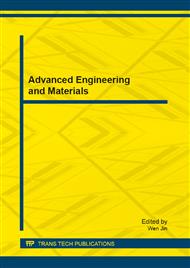p.635
p.640
p.646
p.652
p.658
p.665
p.671
p.679
p.686
Interface Design of the Location-Based M-Tourism Application
Abstract:
Along with the development of smartphones and tablets world-widely, and the progress of mobile internet and Wi-Fi hotspots, users can acquire information via mobile devices anytime and anywhere.In recent years, Taiwan's tourism is flourishing, more and more foreign travelers come to visit Taiwan.Therefore, providing a user-friendly M-tourism system for foreign travelers can help them to experience more during traveling.We referred the theories of human-computer interface design to develop our M-tourism system—the LBS M-tourism Application.This system not only provides online traveling information, but integrates with location-based services (LBS). The LBS M-tourism Application can use global positioning system (GPS) technology, and provide traveling information or services to the user based on his/ her present location.
Info:
Periodical:
Pages:
658-662
Citation:
Online since:
February 2013
Authors:
Price:
Сopyright:
© 2013 Trans Tech Publications Ltd. All Rights Reserved
Share:
Citation:


